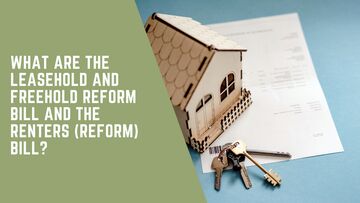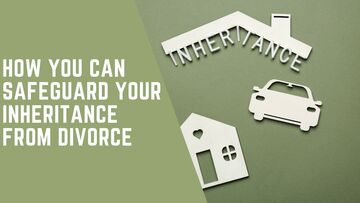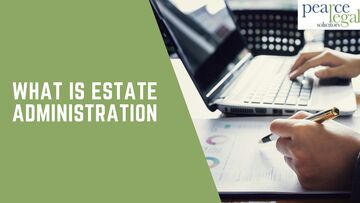Understanding the Implications of the Building Safety Act 2022 on Leasehold Conveyancing
Conveyancing| 10.11.2023
On 1st April 2023, the Building Safety Act 2022, which was drafted in response to the 2017 Grenfell Tower tragedy, came into force. At its core, the new law aims to improve how “higher-risk” buildings are designed, constructed and managed while giving homeowners more rights, powers and protection.
The Building Safety Act 2022 has widespread implications across many areas of the property sector, including for conveyancers and their leasehold clients. In this article, we will explain the main elements of the Building Safety Act 2022 (BSA 2022) and what conveyancers need to consider when dealing with lease transactions.
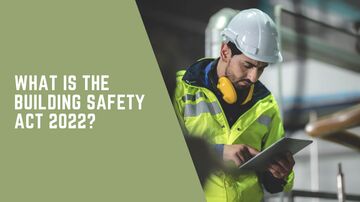
What is the Building Safety Act 2022?
The Building Safety Act 2022 (BSA 2022) was introduced following the 2017 Grenfell Tower tragedy to deal with the many safety concerns for occupants of high-rise buildings that the disaster raised. The BSA 2022 is intended “to secure the safety of people in or about buildings and to improve the standard of buildings”. The new provisions cover:
- The building safety regulator and its functions in relation to buildings in England
- Amendments to the Building Act 1984
- The role of the regulator as the building control authority in relation to higher-risk buildings in England
- Requirements for the regulators to establish and maintain registers of building control approvers and building inspectors
- Occupied higher-risk buildings in England and imposes duties on accountable persons
- Remediation and redress
- Requiring a new homes ombudsman scheme to be established
- Powers to make provision about construction products;
- Fire safety
- Regulation of architects and
- Housing complaints
The BSA 2022 also creates three new regulatory bodies charged with providing oversight of the new legislation: the Building Safety Regulator, the National Regulator of Construction Products and the New Homes Ombudsman.
As of 1st October 2023, the following aspects of the BSA 2022 became applicable:
- Duty holders are now required to properly plan, manage, and monitor their activities in relation to building regulations
- The Building Safety Regulator became the building control authority for all high-rise buildings
- A ‘golden thread of information’ is now mandatory for all higher-risk buildings
- A ‘Mandatory Occurrence Reporting System’ is now required for all higher-risk buildings. This will enable the BSR to identify and assess risks that may have a potential impact on fire and structural safety
- Improved fire safety regulations under the Regulatory Reform (Fire Safety) Order 2005 (Section 156), and
- The requirement for a relevant completion certificate or final notice
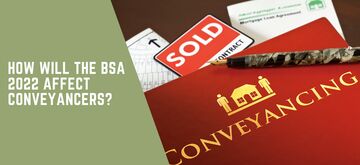
How will the BSA 2022 affect conveyancers?
Conveyancers in England and Wales will need to understand the new protections for leaseholders of higher-risk buildings contained in sections 116 to 125 and Schedule 8 of the BSA 2022. This provides protection for leaseholders with a qualifying lease from needing to pay remediation work for a defect that relates to a safety risk relating to the spread of fire or the collapse of the building.
To determine whether a lease qualifies for the leaseholder protections under Schedule 8, conveyancers will need to follow a number of steps.
Step 1: The first question that conveyancers will consider is whether they are dealing with a relevant higher-risk building. According to Part 4 of the BSA 2022, a higher-risk building is one that is at least 18 metres in height or has at least 7 storeys. In addition, the building must contain at least two residential units (i.e. a dwelling or any other unit of living accommodation).
Step 2: The next step is to assess whether the lease is a “qualifying lease” for the purposes of protection under the BSA 2022. A lease will qualify for protection if:
- It is a long lease (granted for 21 years or more) of a single dwelling in a relevant building
- The tenant under the lease is liable to pay a service charge
- The lease was granted before 14th February 2022
- The dwelling was the tenant’s only or principal home, and
- The tenant did not own any other dwelling in the UK, or the tenant owned no more than two dwellings in the UK apart from their interest under the lease.
It is important to bear in mind that a lease granted after 14th February 2022 will not be a qualifying lease and, therefore, will not be protected under Schedule 8 to the BSA 2022.
Step 3: Conveyancers will next need to check whether there are any historical defects in the building that will or may need to be remedied. Defects should be listed in the replies to enquiries or an EWS1 form.
Step 4: If there are historical defects, conveyancers will need to check whether they are “relevant defects”. Section 120 of the BSA 2022 states that a relevant defect is a building defect “that arises as a result of anything done (or not done) or used (or not used) in connection with relevant works that causes a building safety risk”. “Relevant works” means any of the following:
- Works relating to the construction or conversion of the building, if the construction or conversion was completed in the relevant period
- Works undertaken or commissioned by or on behalf of a relevant landlord or management company, if the works were completed in the relevant period, and
- Works undertaken after the end of the relevant period to remedy a relevant defect (including a defect that is a relevant defect by virtue of this paragraph)
Step 5: The next question to ask is whether the recovery of the costs of remedying the defect through the service charge is limited by the leaseholder protections in Schedule 8. Schedule 8 of the BSA 2022 restricts when and how much of the costs of any repair work can be charged via the service charge.
Even if all of the above has been satisfied, to satisfy lenders, conveyancers will still need to check whether the existing leaseholder has submitted a Leaseholder Deed of Certificate certifying that on 14th February 2022, the lease was a qualifying lease and that they owned no more than 3 dwellings.
Final words
Due to the complexities involved in determining whether a buyer of a residential leasehold will be protected from onerous building remediation work in the future, it is all the more important for purchasers to engage the services of a conveyancer who understands the implications of BSA 2022 and the protection it affords. If all of the above can be satisfied, then, in theory, the leaseholder will not be held liable for the cost of any remediation for relevant defects, which are the landlord’s responsibility. Given that this means a leaseholder will not need to pay for expensive building work, this provides them with much-needed peace of mind. The challenge for conveyancers is ensuring that they have done all they can to provide assurances regarding the lease and whether it qualifies for protection from any liability to pay for remediation works in the future.
Pearcelegal has an expert property and conveyancing team who can advise and represent you regarding the Building Safety Act 2022 and any other legal matter relating to the sale or purchase of a property. To make an appointment, please contact us on 0121 270 2700 or enquire through our contact form.
Expert advice for you Book a free consultation
The team at Pearcelegal will be delighted to discuss your legal matters and give you a no-obligation quote.

